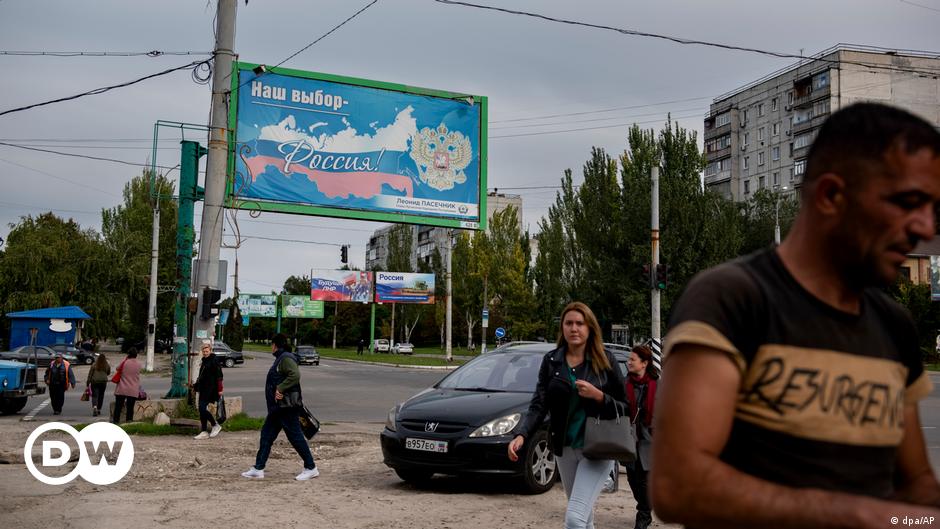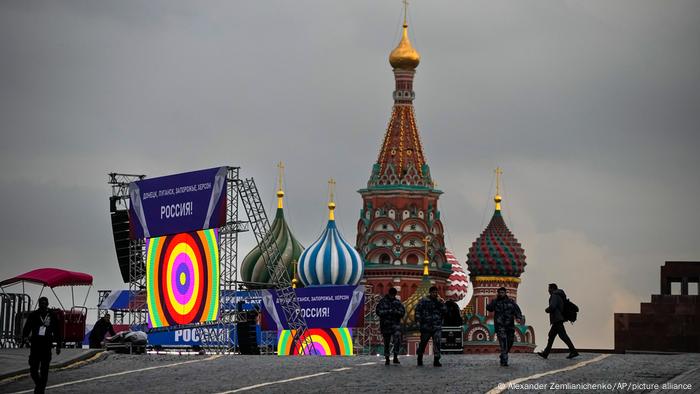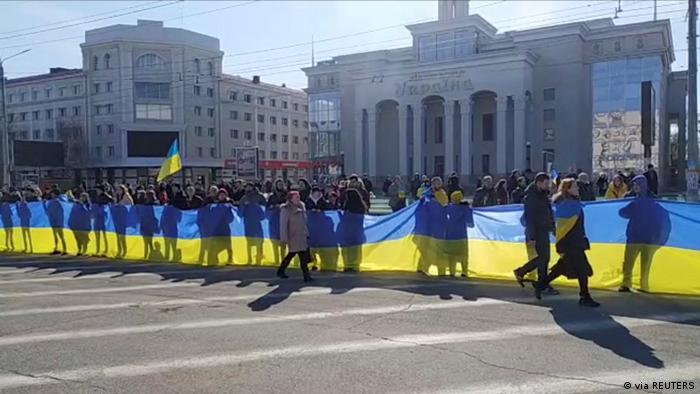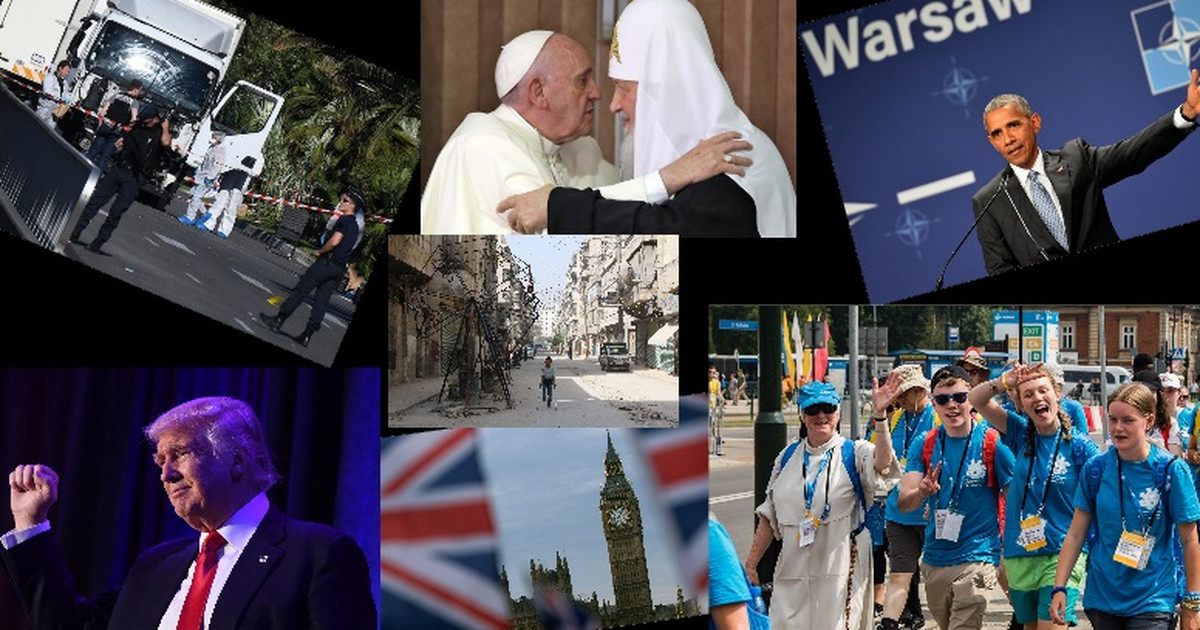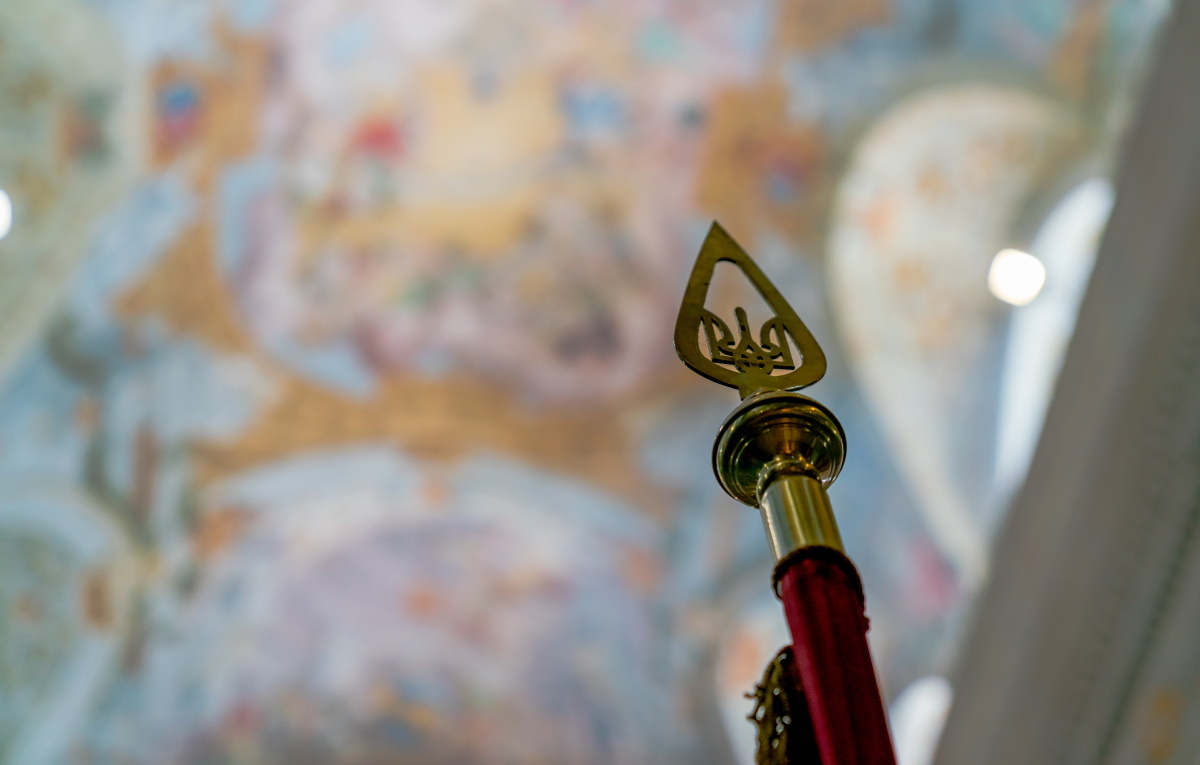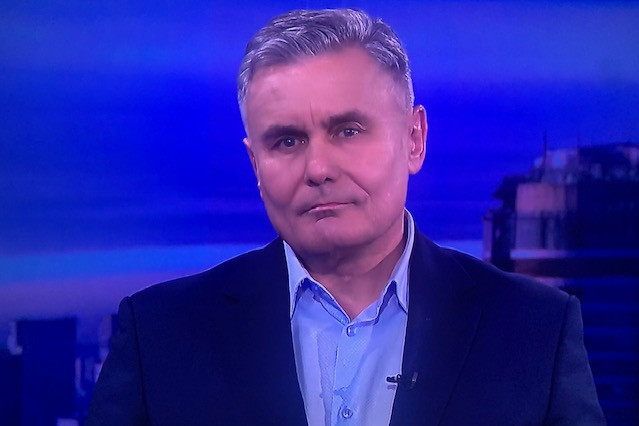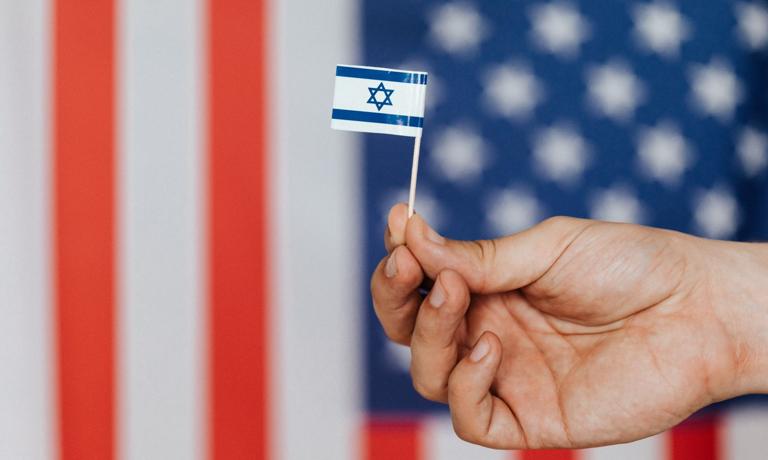“For me, it’s not national borders and territories that matter, but the fate of the people.” This is an excerpt from an interview given by Russian President Vladimir Putin to the newspaper “Bild” in January 2016. The topic is the annexation of Crimea. Today, the head of the Kremlin is again using force to change Ukraine’s borders. to the Russian Federation.
While Moscow threatens to use all kinds of weapons to defend the new territory, including nuclear weapons, Ukraine and most countries in the world state that they do not recognize annexation itself or its previous “referenda”, with the majority allegedly voting for annexation. live on the other side of the front line and what will change for them?
Different mood in Donetsk and Kherson
Although the exact number of people living in the occupied territories is unknown, there are several million people in question. Although the annexation took place simultaneously in all regions, the sentiment there was very different. Mandatory selection has been going on in the Donbas since 2014. Hundreds of thousands, mostly young people, left the self-proclaimed “republic” and moved to Russia or to parts of Ukraine controlled by Kyiv. The remaining elders cannot leave or support the separatists.
– For some people, what they always wanted will come true. There are always groups in society that collaborate, says Andreas Umland, an expert at the Stockholm Center for Eastern European Studies (SCEEUS). It seems that there are more of them in the east than in the south of Ukraine, but there are no exact data on this.
Some Donbas residents also supported the annexation out of fear of Ukrainian justice after Ukraine’s return to power, said Sergei Garmasz, editor-in-chief of the Internet newspaper Ostrow from Donetsk and a former member of the tripartite contact group for its implementation. of the Minsk agreement. ‘yes’, because if the Ukrainians return, they will have nowhere to flee, namely to Russia – added Garmasz. How many such people there, no one knows.
As in the occupied territories of the Donbas in southern Ukraine and in some of the Kherson and Zaporizhia oblasts, during the six months of occupation, some social changes occurred, although not very significantly. Hundreds of thousands of people fled, but among those who remained were many Kiev supporters. This is evidenced by the protests with the Ukrainian flag that occurred in the first weeks and months after the invasion. “In Kherson and Zaporizhia, many people hate Russia, and in Donetsk and Lugansk for eight years people have been filled with propaganda,” Garmash said.
Billions to support annexed territories
Unlike Crimea, where two-thirds of ethnic Russians lived at the time of annexation in 2014, there was less than half in eastern and southern Ukraine. According to the 2001 census, the highest percentage of Russians – about 40 per cent – was at the start of the war in 2014 in the Donetsk and Luhansk oblasts. In Zaporizhia and Kherson, it’s about 25 and 15 percent, respectively.
At first glance, formal annexation will not change much in life in areas that have been under Russia’s effective control for six months. The experience in Crimea gives you an idea of how events can unfold. This will be a mix of sticks for the dissident and carrots for the faithful. Wages and pensions will increase, and Russia will try to rebuild damaged infrastructure. On Thursday, September 29, the exact figures were announced by the deputy head of the Kremlin government, Sergei Kiriyenko. According to him, 3.3 billion rubles (about EUR 58 million) will be allocated for “support projects” for the new territory.
Everything related to Ukraine will be replaced as soon as possible with the Russian equivalent: law, currency, telecommunications operators, language, education. One of the main goals is to return to the Russification of the culture of the area that historically considered the Kremlin itself.
What would the guerrilla movement look like?
Residents of annexed areas may have to make a choice: they accept the change or reject it – risking their lives. “It’s a difficult decision,” explained Andreas Umland. According to him, many will be “desperate, because they cannot accurately assess the further course of events.” It is not known how long Russia will hold out and how quickly Ukraine can retake the territory. There have been reports of repression, arrests, and torture. sympathetic people to Kiev Experience The experience of Crimea shows that the persecution of dissidents can last for years.
A special test is waiting for everyone, because they will probably be appointed to the Russian army for the war with Ukraine. Perhaps the Kremlin also wanted to reduce the risk of a guerrilla movement in this way. So far, it has made itself felt in the south with several attacks on people cooperating with the invaders. However, Sergei Garmasz believes that Ukrainian special services are behind it. He did not expect the massive guerrilla movement that occurred on Ukrainian territory during World War II, partly because of the current technical tracking capabilities. – Partisan action today and during World War II is a different matter. Now there are video cameras and telephone surveillance. What we are seeing is the operation of an organized group led by a secret service – said Garmasz.
Ukrainians in the east and south will be tested in various ways to see how loyal they are to the new government, for example when they acquire Russian citizenship. This is the case in Crimea and the Donbas, where this process began many years ago. But there may also be differences from the Crimean scenario. Observers, for example, do not expect a massive displacement from Russia, as happened on the peninsula. The reason is the ongoing hostility. – There will also be no return of former Donetsk residents from Russia, where they were used as labourers, especially since there are no jobs in the Donbas. The main company has been destroyed – says Sergei Garmasz.
– The attractiveness of this region for Russia will be small – also believes Andreas Umland. – Russia will be afraid that they have to leave again. It won’t work.
Will Yanukovych and Azarov return to Donetsk?
The question of who can create a new regional state power remains open. Will local Ukrainians lead the annexed areas or will they be officials sent by Russia?
So far, the Russian occupiers have relied on a member of the pro-Russian former ‘Party of Regions’, former president Viktor Yanukovych, who fled to Russia in 2014. Will he, his prime minister Mykola Azarov and other representatives of the former Ukrainian elite now return to the Donbas? Experts didn’t rule it out, but they didn’t believe these people would gain power again. Meanwhile, a new elite has formed in Ukraine who will not give up their position, believes journalist Sergei Garmash. Perhaps the regional leadership will shift from Ukraine to officials from Russia, as the Russian press writes about such a scenario. At some level, this process has already begun.
Would you like to comment on this article? Do it on Facebook! >>

“Reader. Future teen idol. Falls down a lot. Amateur communicator. Incurable student.”

